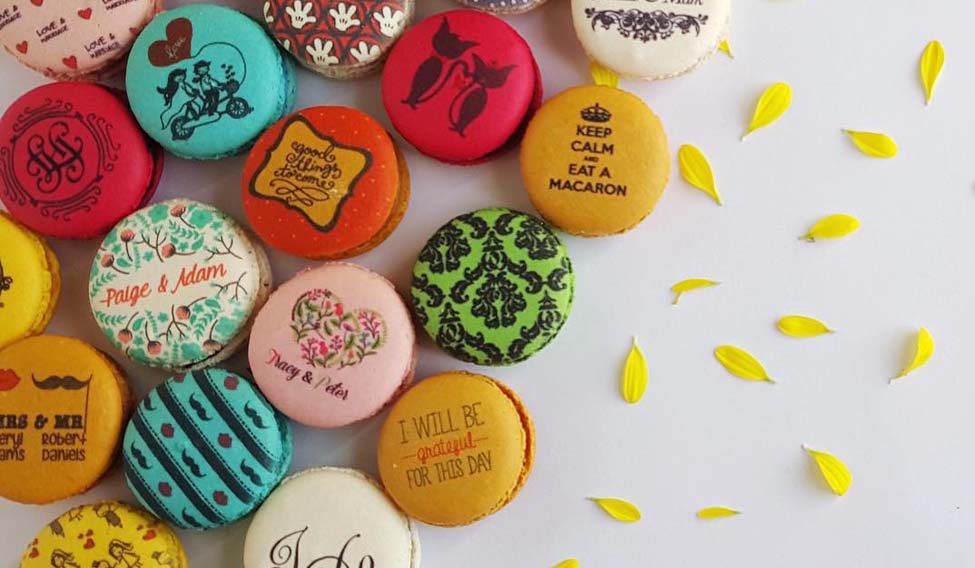When an accounting assistant, a banker, and a packaging tycoon come together to fulfil their entrepreneurial dreams, one naturally expects a financial business venture to come to life. But, in the case of Sameer Nigam, Anuj Khanna and Diksha Khanna, aka SAD (as they are addressed in internal communications), food took precedence over finance. And how! The trio came up with Amazeology India, an innovative venture that takes edible food art to the next level through food printing.
So, from intricate design patterns, messages, photographs, wedding invitations or monograms, the technique allows customers to turn their favourite Kaju Katli, macaroons, chocolates, cookies, marshmellows, jelly beans, choco beans or any other dish into customised pieces of art.
“Food printing is, essentially, an incredible technology that allows you to print on food products. Primarily, we have four colors with which any design can be printed on the food item,” says Diksha, who is based in Australia and owns Branded Chocolate, a marque of high-end confectionaries.
But, how is food printing different from fondant cake printing? “We are printing directly on the surface of the food—flat or curved—whereas on cakes, a thin sugar sheet is used.”
The edible ink, used to create the patterns, is imported from Europe, she claims. “We have a better and sharper printing quality because we use digital printers that are specially designed to print on food.”
Besides, she says the technique allows them to print on food items of any height or base. “Also, we can print different images on the same single cookie. We are not limited to one print. We can print anything.”
Launched in Australia in 2015, the concept took the market by storm and earned her four awards.
What was behind the decision to introduce it in India? “It was the obvious thing to do. We knew the scope is huge is India. Amazeology was hugely successful in Australia within a year, even though the size of the market and population were small. In contrast, in a huge market like India, people like customised products on occasions like Diwali and Holi. So, we decided to launch it in India,” explains the 35-year-old.
And, the entrepreneur is confident about the success of the concept in India.
“Well, the great response that we received within a couple of months after the launch makes us confident about Amazeology's success in India. On the occasion of rakshabandhan, the numbers were very high. People wanted to give customised printed cookies to their brothers and sisters. There is a fun element in our products.”
Moreover, there are numerous occasions in India where people exchange gifts. Food printing allows them to gift something that they have designed themselves, which adds to the emotional quotient. “India is about emotions and our product makes it happen through small gestures.” Keeping in mind the Indian taste buds, the brand has also customised their product range. “We have added mithai to our offerings.”
So what are the future business plans for India? “The future plan is expansion in terms of both sale and products range. We have already started bringing new products and simultaneously we are concentrating on online sales which is easier.”
The company is doing social media marketing through trade shows. It is also targeting the wedding market. “There is no wedding without mithais and chocolates. We have covered all the possible elements during the wedding season. Apart from all these, we are also collaborating with a wedding planner and looking forward to expand our market,” concludes Diksha.





